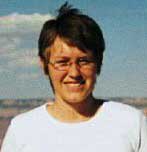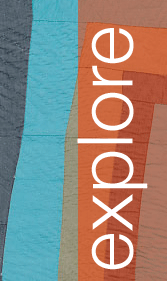KATHERINE PERRY
 Katherine D. Perry is in her fifth year of Ph.D. work at Auburn University, and her current research focuses on American women’s poetry and feminist theories. In addition to her work on the Quilts of Gees Bend in Context, she teaches a poetry workshop at Alabama’s Tutwiler women’s prison and teaches Composition and World Literature in Auburn’s English Department. Her most recent publication is a poem entitled “Playing Gender” which can be found in the March/April 2004 Women’s Studies journal.
Katherine D. Perry is in her fifth year of Ph.D. work at Auburn University, and her current research focuses on American women’s poetry and feminist theories. In addition to her work on the Quilts of Gees Bend in Context, she teaches a poetry workshop at Alabama’s Tutwiler women’s prison and teaches Composition and World Literature in Auburn’s English Department. Her most recent publication is a poem entitled “Playing Gender” which can be found in the March/April 2004 Women’s Studies journal.
Abstract
Piecing Resistance
In her book Quilts as Text(iles): The Semiotics of Quilting , Lisa Elsley builds on feminist works such as Helene Cixous' The Laugh of the Medusa, Luce Irigaray's The Sex Which Is Not One , and Elaine Showalter's Piecing and Writing (among others) to argue that quilts are texts that urge global change through community and that because they are primarily created by women, they represent a language among women that, until recently, had been undetected by patriarchal culture. Because the language was undetected, it was unregulated and thought to be harmless to the men and power structures that surrounded it. I would like to add ideas like Elsley's to my research in order to interrogate the ways in which rural African-American women in Alabama have employed textiles to speak within their communities and now, with the phenomenon of the collection and subsequent display of these quilts all over the country (and the world), have been able to speak to a larger audience.
In short, I am exploring the concept that the quilts are vernacular texts that exhibit political and personal resistances to the hegemonic culture, and while the hegemonic culture can read the quilts because they speak similar languages, there are communal and intimate languages also spoken by these quilts that resist a complete digestion by the outside world. These ideas, which seem to best suit themselves to an academic paper, can be incorporated into lesson plans, can spark approaches into our wording of in the final contextual exhibit, and will inform my part of the performance piece.


